メニュー
JP | JPY
-
-
-
- Challenges and Chances: A Review of the 1st Stem Cell Community Day
- Summertime, and the Livin’ Is Easy…
- Follow-on-Biologics – More than Simple Generics
- Bacteria Versus Body Cells: A 1:1 Tie
- Behind the Crime Scene: How Biological Traces Can Help to Convict Offenders
- Every 3 Seconds Someone in the World Is Affected by Alzheimer's
- HIV – It’s Still Not Under Control…
- How Many Will Be Convicted This Time?
- Malaria – the Battle is Not Lost
- Physicians on Standby: The Annual Flu Season Can Be Serious
- At the Forefront in Fighting Cancer
- Molecular Motors: Think Small and yet Smaller Again…
- Liquid Biopsy: Novel Methods May Ease Cancer Detection and Therapy
- They Are Invisible, Sneaky and Disgusting – But Today It’s Their Special Day!
- How Many Cells Are in Your Body? Probably More Than You Think!
- What You Need to Know about Antibiotic Resistance – Findings, Facts and Good Intentions
- Why Do Old Men Have Big Ears?
- The Condemned Live Longer: A Potential Paradigm Shift in Genetics
- From Research to Commerce
- Chronobiology – How the Cold Seasons Influence Our Biorhythms
- Taskforce Microbots: Targeted Treatment from Inside the Body
- Eyes on Cancer Therapy
-
-
-
-
- Challenges and Chances: A Review of the 1st Stem Cell Community Day
- Summertime, and the Livin’ Is Easy…
- Follow-on-Biologics – More than Simple Generics
- Bacteria Versus Body Cells: A 1:1 Tie
- Behind the Crime Scene: How Biological Traces Can Help to Convict Offenders
- Every 3 Seconds Someone in the World Is Affected by Alzheimer's
- HIV – It’s Still Not Under Control…
- How Many Will Be Convicted This Time?
- Malaria – the Battle is Not Lost
- Physicians on Standby: The Annual Flu Season Can Be Serious
- At the Forefront in Fighting Cancer
- Molecular Motors: Think Small and yet Smaller Again…
- Liquid Biopsy: Novel Methods May Ease Cancer Detection and Therapy
- They Are Invisible, Sneaky and Disgusting – But Today It’s Their Special Day!
- How Many Cells Are in Your Body? Probably More Than You Think!
- What You Need to Know about Antibiotic Resistance – Findings, Facts and Good Intentions
- Why Do Old Men Have Big Ears?
- The Condemned Live Longer: A Potential Paradigm Shift in Genetics
- From Research to Commerce
- Chronobiology – How the Cold Seasons Influence Our Biorhythms
- Taskforce Microbots: Targeted Treatment from Inside the Body
- Eyes on Cancer Therapy
-
JP | JPY
Sorry, we couldn't find anything on our website containing your search term.
プレート
カテゴリー
マルチウェルプレート、マイクロリットルプレート、マイクロプレートとしても知られるプレートは、実験室には欠かせない消耗品で、核酸やタンパク質の定量化アッセイ、細胞の生存率アッセイや増殖アッセイなど、あらゆる種類のさまざまなアプリケーションに使用されます。プレートを探す際には、品質、耐久性、アプリケーションに対する適合性のすべてが重要な考慮事項です。
以下に示すEppendorfのプレート(マイクロプレート、96ウェルプレート、384ウェルプレート、PCRプレート、ディープウェルプレートなど)をご覧ください。弊社のプレートを選ぶ理由を吟味し、お客様の実験室に適したプレートタイプの選択に役立つ情報を見つけてください。
以下に示すEppendorfのプレート(マイクロプレート、96ウェルプレート、384ウェルプレート、PCRプレート、ディープウェルプレートなど)をご覧ください。弊社のプレートを選ぶ理由を吟味し、お客様の実験室に適したプレートタイプの選択に役立つ情報を見つけてください。
もっと読む
Eppendorfの実験室プレートを選ぶ理由
Eppendorfのどのプレートを使用するべきか
Eppendorfのプレートのコスト
Eppendorfの実験室プレートを選ぶ理由
品質と耐遠心力
品質は、Eppendorfのあらゆるプレートの前提条件であり、確固として一貫性のある効率的なアッセイを保証します。弊社のプレートは、高品質ポリマーで作られており、化学薬品、温度、機械的ストレスに高い耐性を持っています。プレートの取扱製品は、耐遠心力も念頭に置いて設計されていて、 マイクロプレート と ディープウェルプレート は、最大6,000 x gまで安定しています。お探しのプレートが、遠心機のマイクロプレートであるか96ウェルや384ウェルのプレートであるか、またはその他のタイプの遠心機プレートであるかに関わらず、弊社では、お客様のニーズにあった質の高い消耗品を幅広く取り揃えています。
もっと読む
シンプルでもスマートな機能でお客様のアプリケーションに適合
Eppendorfのプレートには、シンプルであってもスマートな機能がいくつかあり、実験室のワークフローを向上させます。弊社のすべてのプレートにOptiTrack® マトリクスラベルが付いています。このラベルにより、分注ミスが減り、サンプルを最大30 %早く識別できるようになります。
弊社のマイクロプレートとディープウェルプレートにも、RecoverMax® ウェルデザインが施されています。ウェルの形状により、サンプルの撹拌と回収が最大化される一方、相互汚染のリスクは最小化されます。
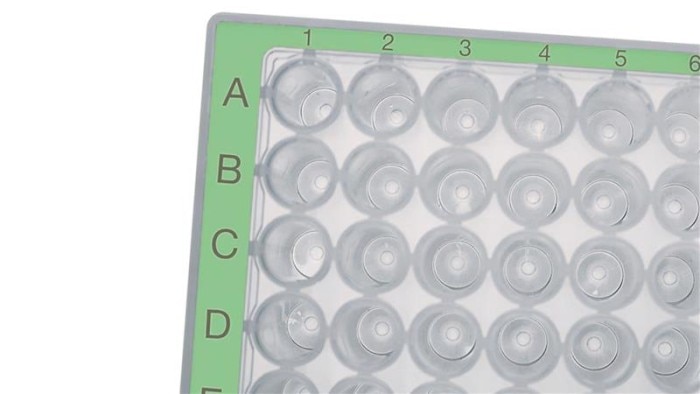
弊社では、さまざまなプレートタイプを取り揃え、次に示すような、特定のアプリケーション向けに最適化しています。
- SafeCode プレート - トレーサビリティ向上のためにカスタマイズされたバーコード
- Eppendorf AssayおよびReader Microplates – シグナル検出を強化するための完全に黒または白のウェル。自家蛍光および自家発光が最小化されます。
- Eppendorf twin.tec® real-time PCR Plates – 白いウェルのPCRプレート。リアルタイムPCR(qPCR)アッセイやその他の蛍光アッセイで、蛍光シグナルを強化するよう設計されています。
- Eppendorf twin.tec® Trace PCR Plates BioBased - BioBasedポリマーで作られたPCRプレートで、実験室のカーボンフットプリントの削減に役立ちます。
もっと読む
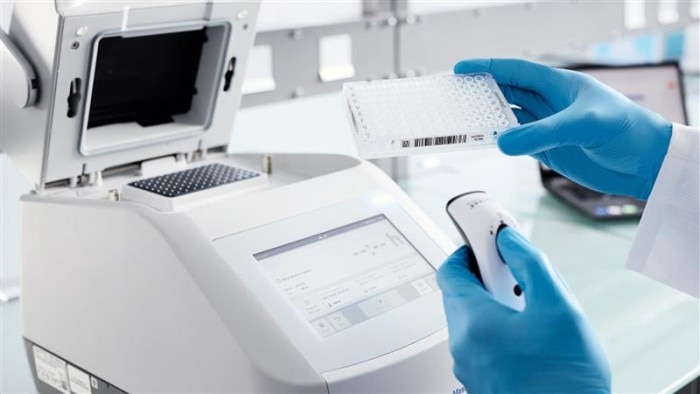
Videos not loading, because cookies have been rejected. Change your

弊社の多様なプレートタイプとその機能の詳細は、 カタログ でご覧いただけます。
もっと読む
Eppendorfのどのプレートを選択するべきか
Eppendorfでは、次に示す3 種類の主要なプレートを提供しています: Eppendorf twin.tec® PCR Plates 、 Deepwell Plates および Microplates 。
Eppendorf Microplatesは、幅広いアッセイ向けの用途の多いオプションです。化学薬品や温度に対する高い耐性が求められるアッセイも対象となります。Eppendorf Deepwell Platesの品質の高さ、用途の広さ、性能は、Eppendorf Microplatesと同等ですが、ウェルがより深く、大容量のサンプルをサポートします。最後に、その名前から連想されるとおり、twin.tec PCR Platesは、PCRアッセイ向けの信頼できる選択肢です。壁が薄いポリプロピレンのウェルでは、熱が最大限サンプルに伝わります。ポリカーボネートの固いフレームは、高い剛性を実現しています。
実験室のニーズに適したプレートタイプを選んだら、ウェルの数(96ウェルプレートまたは384ウェルプレート)、ウェルの形状やプレートの色、サンプル量など、その他数多くの因子を検討します。これ以降には、お客様に適したEppendorfの多様なプレートを選ぶ際に役立つ詳細が記載されています。
Eppendorf Microplatesは、幅広いアッセイ向けの用途の多いオプションです。化学薬品や温度に対する高い耐性が求められるアッセイも対象となります。Eppendorf Deepwell Platesの品質の高さ、用途の広さ、性能は、Eppendorf Microplatesと同等ですが、ウェルがより深く、大容量のサンプルをサポートします。最後に、その名前から連想されるとおり、twin.tec PCR Platesは、PCRアッセイ向けの信頼できる選択肢です。壁が薄いポリプロピレンのウェルでは、熱が最大限サンプルに伝わります。ポリカーボネートの固いフレームは、高い剛性を実現しています。
実験室のニーズに適したプレートタイプを選んだら、ウェルの数(96ウェルプレートまたは384ウェルプレート)、ウェルの形状やプレートの色、サンプル量など、その他数多くの因子を検討します。これ以降には、お客様に適したEppendorfの多様なプレートを選ぶ際に役立つ詳細が記載されています。
もっと読む
ウェルの底はFボトム、Uボトム、Vボトムのどの形状?
Eppendorf Microplatesにはさまざまな形状のウェルがあり、多様なニーズに合うよう設計されています。
- 96ウェルFボトムプレート - 一般的に、平底のマイクロリットルプレートウェルは、蛍光および発光ベースのアッセイに向いており、光の均等な透過が保証されます。また、下からサンプルを分析するプレートリーダーを使用する場合や、付着細胞を培養する場合にも適しています。
- 96ウェルVボトムプレート - V字型(コニカルウェル)で、遠心分離中のサンプルの回収が最大化されるため、遠心機のマイクロプレートをお探しの場合には理想的な選択肢です。特に、高価で量が限られているサンプルを取り扱う際に有益です。
- 96ウェルUボトムプレート – ウェルがU字型(丸底)であるため、サンプルの撹拌、洗浄、ペレット化を含む、さまざまな遠心分離作業に適しています。
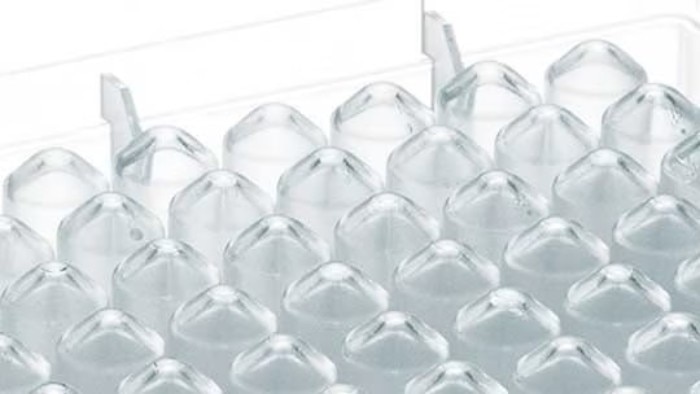
アッセイに最適なウェルの色は?
- 透明なプレート - ウェルが透明なため、サンプルの可視性が高まります。自動化装置に学習させる場合に特に有益です。プレートを使用するのが発光アッセイや蛍光アッセイでなければ、一般的には、透明のウェルがデフォルトの選択肢です。
- 黒のプレート - 低濃度サンプルであっても、優れた信号対雑音比を実現します。
- 白のプレート - 非常に繊細な発光検出で反射を最大化します。
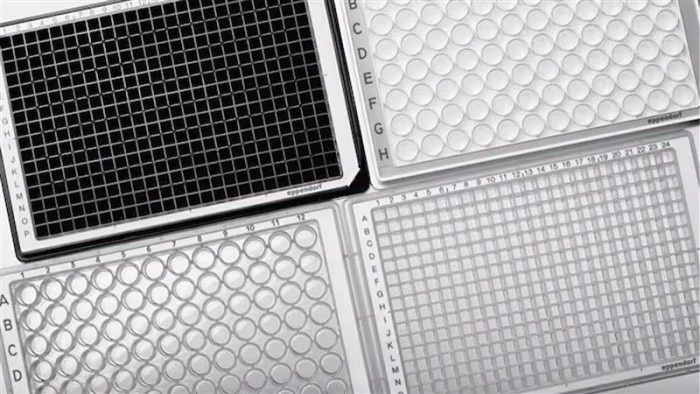
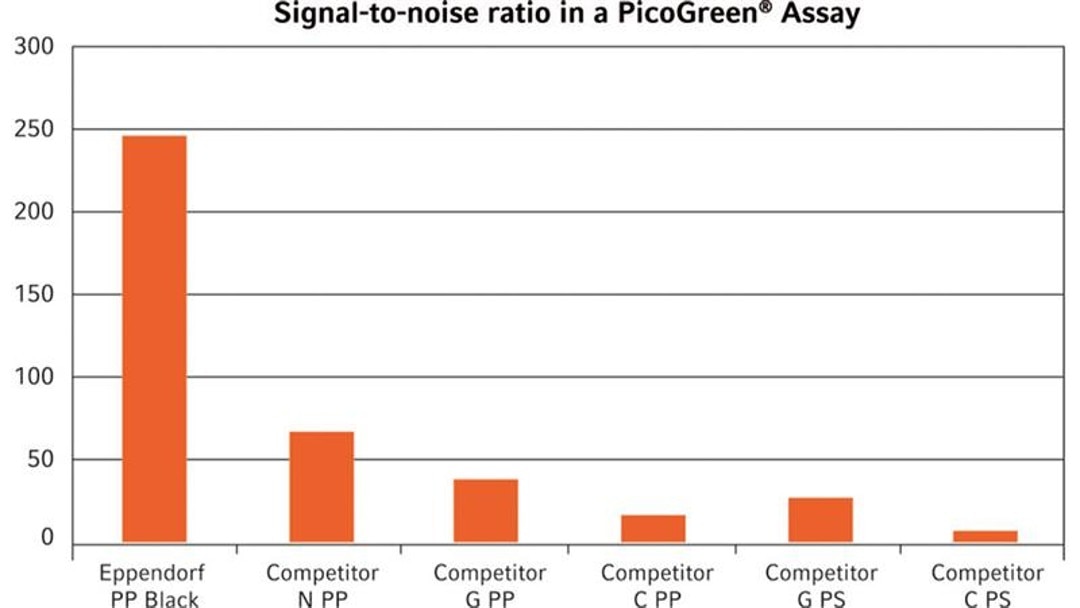
適切なウェルの形状と色を決めるのに、さらにサポートが必要ですか。 このブログを読む。
取り扱うサンプルの量と数は?
弊社のマイクロプレート、ディープウェルプレート、PCRプレートは、通常、96ウェルか384ウェル形式です。96ウェルのマイクロリットルプレートは、サンプル数の少ないアプリケーションまたはウェルの容量が大きめのアプリケーションに適しています。一方、384ウェルプレートは、高処理スクリーニングに適しています。
プレートの形状や動作容量 の詳細は、ここをクリックしてください。
もっと読む
Eppendorfのプレートのコスト
私たちは、品質や性能に一切妥協することなく、Eppendorfのすべてのプレートが手ごろな価格であるよう努めています。特定のプレートタイプの価格に関する情報は、 個々の製品ページ をご覧いただくか、 弊社の営業チームにお問い合わせ ください。
もっと読む
Videos not loading, because cookies have been rejected. Change your













